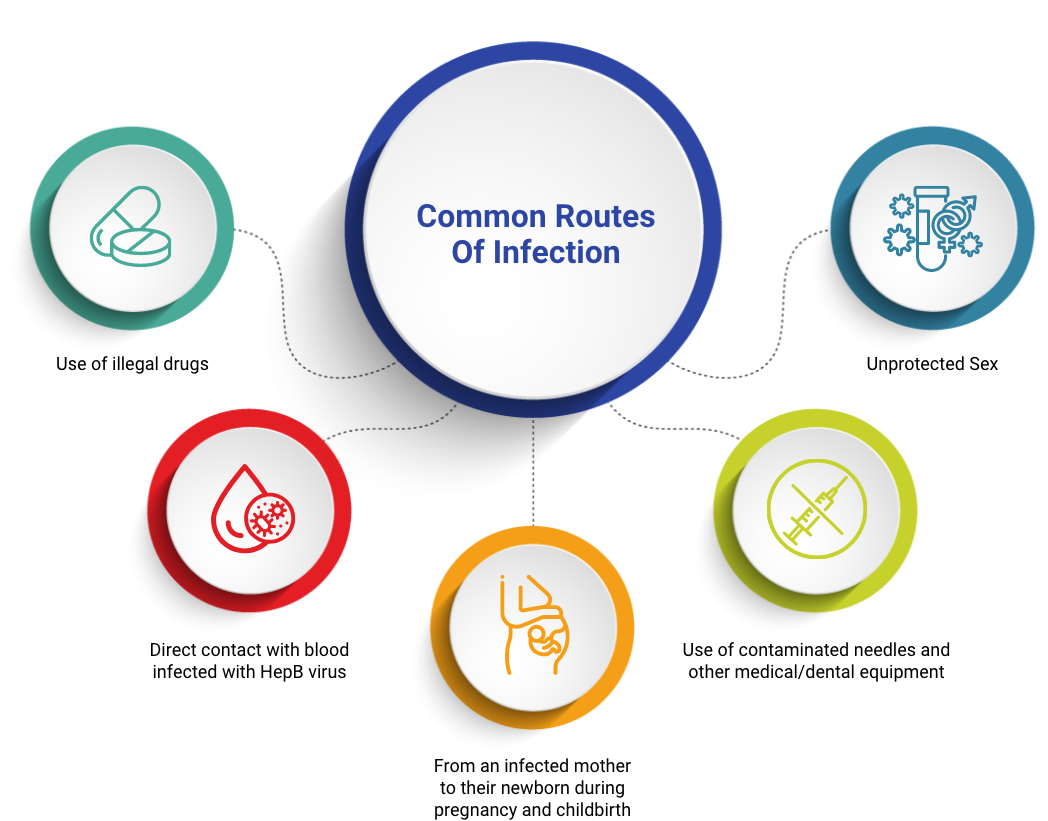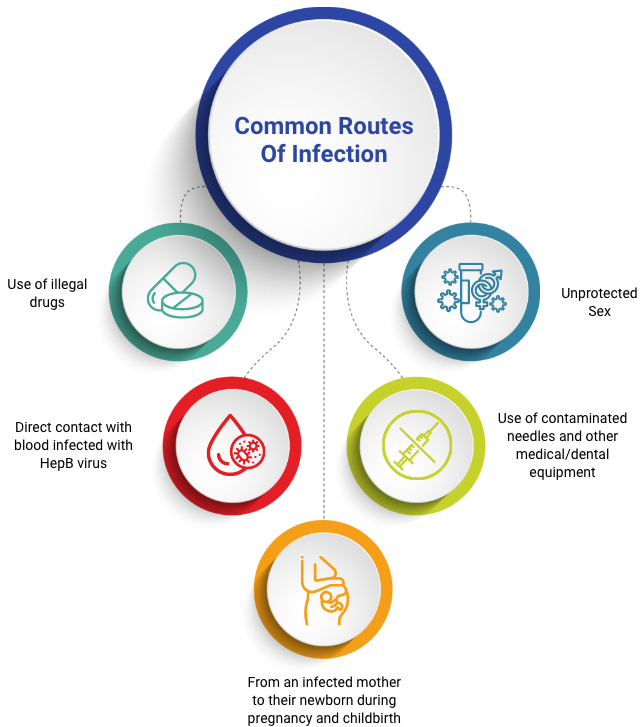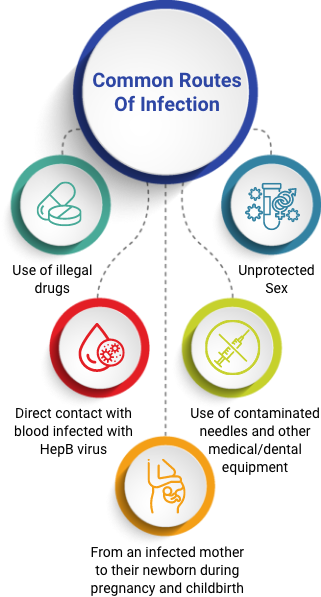Hepatitis B
Testing Options – EIA Assays
How is Hepatitis B Diagnosed?

There are several different types of Hepatitis B (HepB) tests that are used to help to determine if a person has been infected with the Hepatitis B virus (HBV), and if so, how severe the infection is. Although only one sample is collected, HepB testing is performed in three parts in order to provide the highest level of clinical confidence. These tests look for specific antigens and antibodies associated with the virus.
Includes:
HepB core IgM antibody (CPT 86704); HepB surface antibody (HBsAb) total (CPT 86706); HepB surface antigen (HBsAg) confirmatory (CPT 87340).
Sample Requirement:
Serum, 3.5mL volume. Container: Glass or plastic red-top tube or SST.
Product Handling:
Ambient shipment, 14 days stability at room temp/refrigerated or frozen.

Hepatitis B Testing Strategies

Hepatitis B surface antigen (HBsAg) test:
This test is used to detect the presence of the HBV surface antigen in a person’s blood. A positive result indicates that a person is infected with HBV. However, it may not be clear if this is a new acute, or a chronic infection. It is important to note, that a positive HBsAg test result means the patient is actively infected and can spread the infection to others through blood.
Hepatitis B surface antibody (anti-HBs) test:
This test measures the levels of antibodies produced by a person’s immune system in response to the HBV vaccine or a previous HBV infection. A positive result indicates that a person has immunity to HBV.
Hepatitis B core antibody (anti-HBc) test:
This test detects the presence of antibodies against the core antigen of HBV. A positive result may indicate a current or past HBV infection, but it does not distinguish between acute or chronic infection. This test result is typically used in conjunction with the HBsAg and anti-HBs test to assess the patient’s HepB status.
Hepatitis B e antigen (HBeAg) test:
This test measures the amount of HBeAg in a person’s blood. A positive result may indicate a high level of HBV replication and therefore increased infectivity.
Hepatitis B viral load test:
This test measures the amount of HBV DNA in a person’s blood. A high viral load may indicate a more severe infection and increased risk of transmission.
These tests are typically used in combination to assess a patient’s HBV infection status, to monitor disease progression, and to evaluate the effectiveness of treatment. It is important to consult with a healthcare provider to determine which tests are appropriate for a particular patient’s situation.
Test Interpretation and Recommendation

No Immunity to HepB
No previous infection or vaccine response.
![]() Vaccination to HepB Recommended
Vaccination to HepB Recommended
Immunity to HepB
Antibodies to HepB surface antigen are detected indicating natural immunity via previous infection.
![]() No Further Action Required
No Further Action Required
Immunity to HepB through complete vaccination
No current or previous HepB infection.
![]() No Further Action Required
No Further Action Required
Active HepB Infection
Positive HBsAg indicates the presence of the virus and an active infection.
![]() Further Testing Required to Fully Assess Patient
Further Testing Required to Fully Assess Patient
Potential active HepB infection
![]() Further Testing Required to Fully Assess Patient
Further Testing Required to Fully Assess Patient
Interpreting acute versus chronic HepB infection is based on the profiles of several serology biomarkers that present during various phases of HepB infection. HBsAg is typically the first serological biomarker associated with new acute infection. Detection can be as soon as a week following initial infection, and remains detectable for up to 9 weeks post infection. Recovery from HepB infection is associated with a negative HBsAg test result.
Anti-HBs are typically detected in the blood after the clearance of HBsAg from the patient, and are associated with the clearance of the infection, and immuno-protection from re-infection.
A positive IgM Anti-HBc test is typically associated with a new acute infection, however in patients with a history of chronic HepB, it may be indicative of a liver flare-up of the infection and repeat testing should be provided.
A positive IgG-Anti-HBc test is a biomarker of past infection.
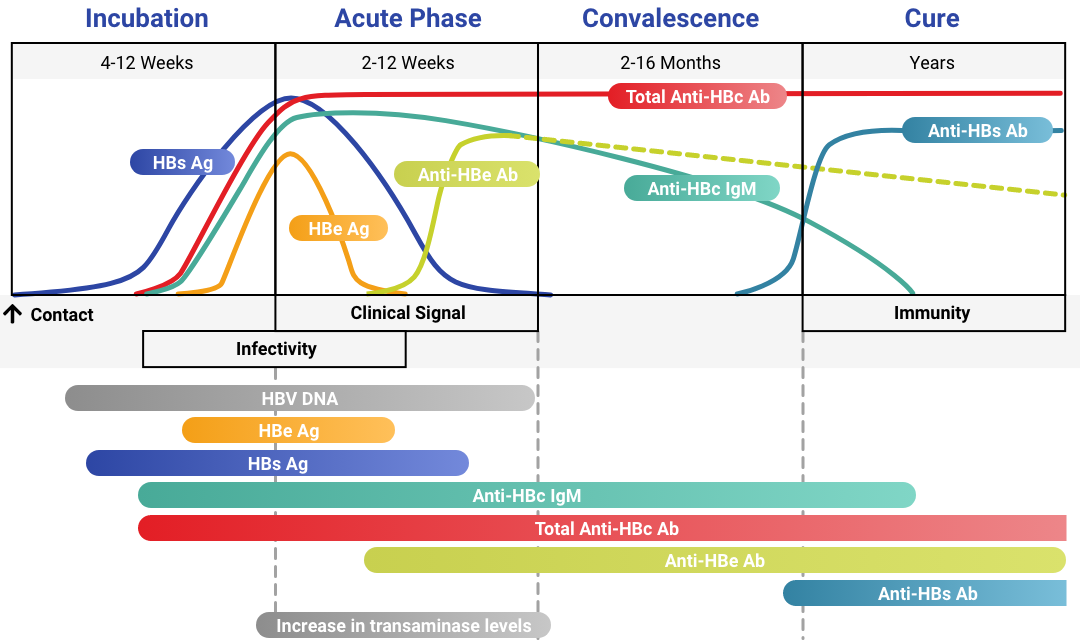
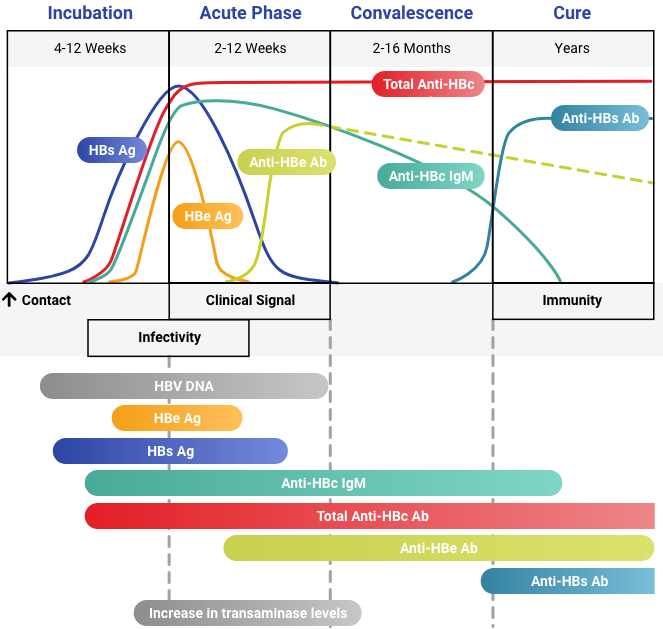
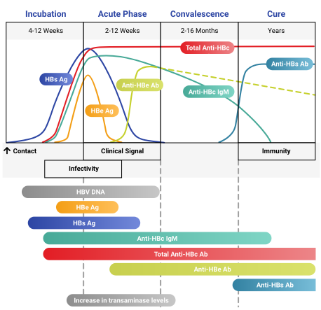
Typical profile of an individual’s immune response to infection with HBV. The detection of HBsAg is associated with infectivity and individuals who test positive should be informed of their ability to transmit the infection to others. Although most individuals recover within 6 months, other individuals may transition into a state of chronic infection, associated with a higher risk of liver failure, liver cancer or cirrhosis.
Hepatitis B Testing is crucial for identifying and treating HepB infection, and preventing transmission to others. The virus is transmitted through blood and sexual fluids.
